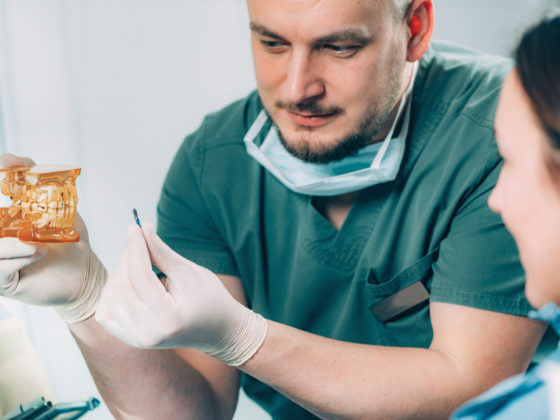Kanata Dental Clinics Use Radiography to Detect Oral Health Problems Before They Progress
 Radiography – the use of x-rays to take images of things such as the human skeleton – has been practiced for over a century. The principle is simple enough: certain varieties of electromagnetic radiation, which in 1895 were named “x-rays” because they were still quite mysterious at the time, can pass through soft materials like skin and muscle, but not through hard materials like bone or metal. The result of radiography is an image that shows everyone from a surgeon to a dentist a clear picture of bones and teeth.
Radiography – the use of x-rays to take images of things such as the human skeleton – has been practiced for over a century. The principle is simple enough: certain varieties of electromagnetic radiation, which in 1895 were named “x-rays” because they were still quite mysterious at the time, can pass through soft materials like skin and muscle, but not through hard materials like bone or metal. The result of radiography is an image that shows everyone from a surgeon to a dentist a clear picture of bones and teeth.
While you may not realize it, the importance and value of getting x-rays done at your local Kanata dental clinic is higher than you might think. The technology, which has advanced significantly in the last century, provides a wealth of benefits to your oral health, and is sometimes the only way to catch certain conditions in their early stages.
In children, for example, a dentist may take x-rays at regular intervals to monitor the development of their teeth. Dental care in children is especially important because their teeth and jaws are still in development, and their oral health at this early stage may affect their teeth for years to come. Regular x-rays can help make sure that their primary teeth are falling out and being replaced by permanent teeth at a healthy pace. Children are also at a higher risk of tooth decay because their teeth are smaller and decay may reach the inner part of the tooth more quickly, which further underlies the importance of regular radiographs.
Even adults can benefit from having images taken on a semi-regular basis at their Kanata dental office. If you’ve had extensive work done on your teeth, in particular fillings, or if you drink lots of soda and other sweet drinks, an x-ray will help detect tooth decay beneath the filling or in places that cannot be easily examined manually. For adults with periodontal disease, regular radiography appointments will help their dentist keep on top of bone loss. Smokers are at a particularly high risk of periodontitis and should schedule regular appointments with their Kanata dental clinic for radiographs.
There are some who feel that the technology behind radiography is dangerous. And while it is true that high levels of radiation exposure can be damaging to cells and tissues, advancements in x-ray technology have ensured a much safer practice than the first radiography images taken back in 1895. Your dentist today uses digital x-rays, which require a drastically lower amount of radiation. In fact, you would absorb more radiation from a day at the beach than from a digital x-ray. And the images taken can be viewed instantly, and sent electronically to another dental office should you move – the benefits are endless!


